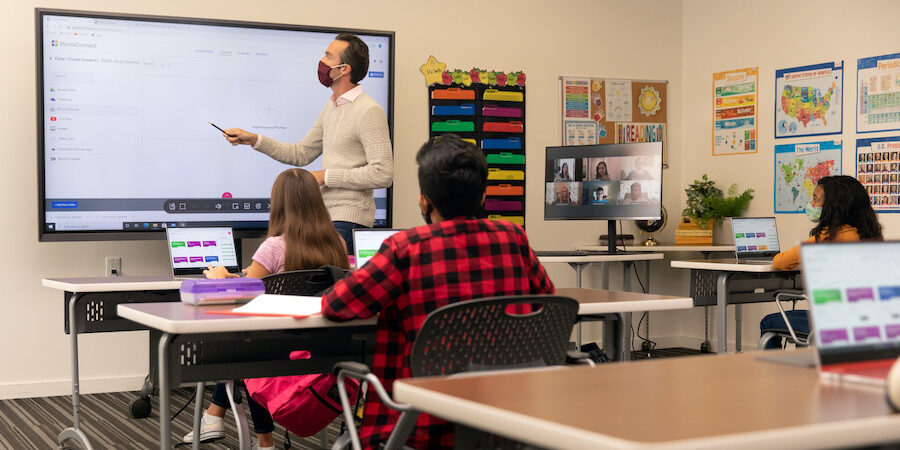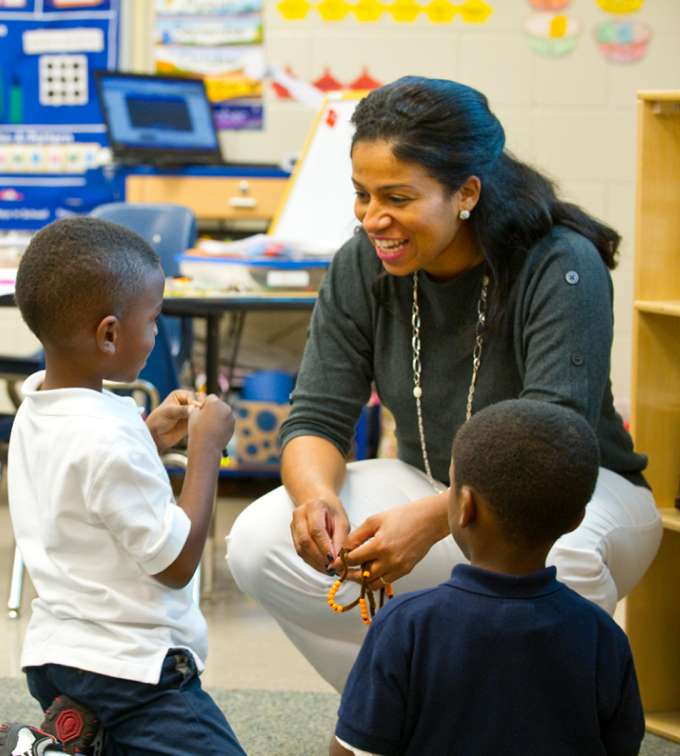Affordable Primary Science Tuition Singapore for All Learning Needs
Affordable Primary Science Tuition Singapore for All Learning Needs
Blog Article
Checking Out the Different Teaching Approaches in Key Science Education Today
The landscape of primary scientific research education is progressing, with different mentor techniques acquiring prominence in modern class. Inquiry-based discovering, hands-on experiments, and the integration of technology are redefining just how instructors engage young minds. Additionally, joint methods and set apart guideline are being utilized to satisfy the varied demands of pupils, improving both interaction and understanding. As we analyze these methods, inquiries emerge concerning their performance and the implications for future instructional techniques. What might these changes in strategy mean for the following generation of learners?
Inquiry-Based Knowing
Inquiry-Based Understanding (IBL) is a pedagogical strategy that encourages pupils to explore clinical concepts with questioning, examination, and hands-on testing. This approach emphasizes the function of pupils as active participants in their learning, promoting essential thinking and problem-solving skills. By involving with real-world inquiries, students become inspired and curious, which boosts their understanding of scientific principles.
In IBL, instructors function as facilitators, guiding students as they navigate their queries instead of supplying details straight. This student-centered approach allows for differentiation, fitting different finding out rates and designs. Pupils create abilities in creating hypotheses, designing experiments, and assessing information, which are critical for clinical proficiency.
In addition, IBL fosters collaboration among students, encouraging them to share findings and ideas. This collective inquiry promotes social skills and a sense of community within the classroom. The procedure of inquiry encourages strength, as students find out to accept failure as a tipping stone towards understanding.
Hands-On Experiments
Hands-on experiments are a crucial element of effective scientific research education, enhancing the principles of inquiry-based knowing. These experiments allow pupils to engage straight with scientific principles, promoting a deeper understanding with experiential learning. By adjusting products and observing outcomes, young students can grasp abstract concepts in concrete ways.
Such tasks advertise critical reasoning and analytical skills, as trainees hypothesize end results, conduct experiments, and examine results. This procedure urges them to ask concerns, improve their understanding, and establish a clinical way of thinking. Hands-on experiments can be customized to diverse understanding styles, making certain that all pupils have the opportunity to engage meaningfully with the material.
Additionally, hands-on experiments frequently encourage collaboration amongst peers, advertising team effort and communication skills. Functioning in teams makes it possible for students to share ideas, talk about findings, and gain from each other, which improves their general instructional experience.
Including hands-on experiments right into the key scientific research educational program not just improves the finding out setting however also grows a long-lasting interest in scientific research. By proactively joining their education and learning, trainees are much more likely to create an interest for clinical inquiry that extends past the classroom.

Modern Technology Integration
Integrating innovation into primary scientific research education and learning has actually ended up being significantly vital in cultivating pupil involvement and boosting finding out results. The usage of digital tools, such as interactive simulations, virtual laboratories, and instructional software program, gives trainees with chances to explore scientific concepts in cutting-edge means. These sources assist in a much deeper understanding of complicated topics by allowing learners to envision and adjust variables that would certainly be unwise in a conventional classroom setting.
Moreover, technology assimilation urges personalized finding out experiences. Pupils can advance at their own rate, reviewing challenging principles with multimedia sources, which deal with different understanding styles. This adaptability not just supports individual development but additionally cultivates a feeling of autonomy in students.
Additionally, technology acts as a bridge to real-world science, attaching trainees with current research study and professional contributions. Access to online databases and scientific journals widens students' point of views on scientific query and promotes vital believing abilities.
Collaborative Discovering
Collaborative discovering plays an essential role in main scientific research education and learning by promoting synergy and communication skills among pupils. This approach encourages learners to try these out function with each other, share expertise, and engage in problem-solving, which enhances their understanding of scientific ideas. By getting involved in team tasks, pupils learn to articulate their ideas, listen to diverse point of views, and discuss options, every one of which are crucial skills in both academic and real-world contexts.

Study indicates that joint knowing can bring about boosted inspiration and interaction in scientific research subjects, as trainees locate enjoyment in common experiences (primary science tuition Singapore). In addition, this method prepares pupils for future collaborative ventures, outfitting them with the skills required for reliable teamwork in college and professional atmospheres. Eventually, welcoming collaborative discovering in key science education can significantly enhance the discovering experience and advertise a deeper understanding of scientific query
Set Apart Instruction

Distinguished direction can show up in numerous ways, such as differing the content, processes, or products of discovering. Educators may use tiered projects that provide varying levels of complexity, enabling trainees to work at their respective preparedness degrees. Furthermore, flexible organizing strategies can promote partnership among students with various capabilities, fostering peer understanding.
Evaluation plays a crucial role in this technique, as it notifies guideline and assists instructors understand each trainee's distinct requirements. Developmental assessments, such as monitorings and quizzes, can lead instructors in readjusting directory their methods to enhance discovering outcomes. primary science tuition Singapore. Eventually, by executing differentiated direction in primary science education and learning, educators can grow a more effective and fair learning atmosphere, encouraging all students to reach their complete potential in comprehending clinical phenomena
Final Thought
In recap, the varied teaching techniques in key science education, consisting of inquiry-based learning, hands-on experiments, innovation assimilation, joint learning, and separated guideline, collectively add to a much more reliable learning environment. These techniques advertise vital thinking, analytical abilities, and a much deeper comprehension of scientific ideas. By carrying out these strategies, educators can produce appealing and encouraging class that address the varied requirements of trainees, inevitably fostering a long-lasting passion in science and enhancing scholastic success.
Inquiry-Based Learning (IBL) is an instructional strategy that urges trainees to check out scientific principles via wondering about, examination, and hands-on testing.Collective knowing plays a vital duty in key science education by fostering synergy and communication skills amongst trainees.Research shows that collective knowing can lead to increased inspiration and interaction in science topics, as trainees find satisfaction in common experiences.In fostering a comprehensive discovering atmosphere, distinguished instruction arises as a crucial method to accommodate the varied requirements and capabilities of students in primary scientific research education. Ultimately, by applying separated instruction in key science education and learning, educators can cultivate an extra equitable and efficient understanding environment, encouraging all students to reach their full possibility in recognizing scientific sensations.
Report this page